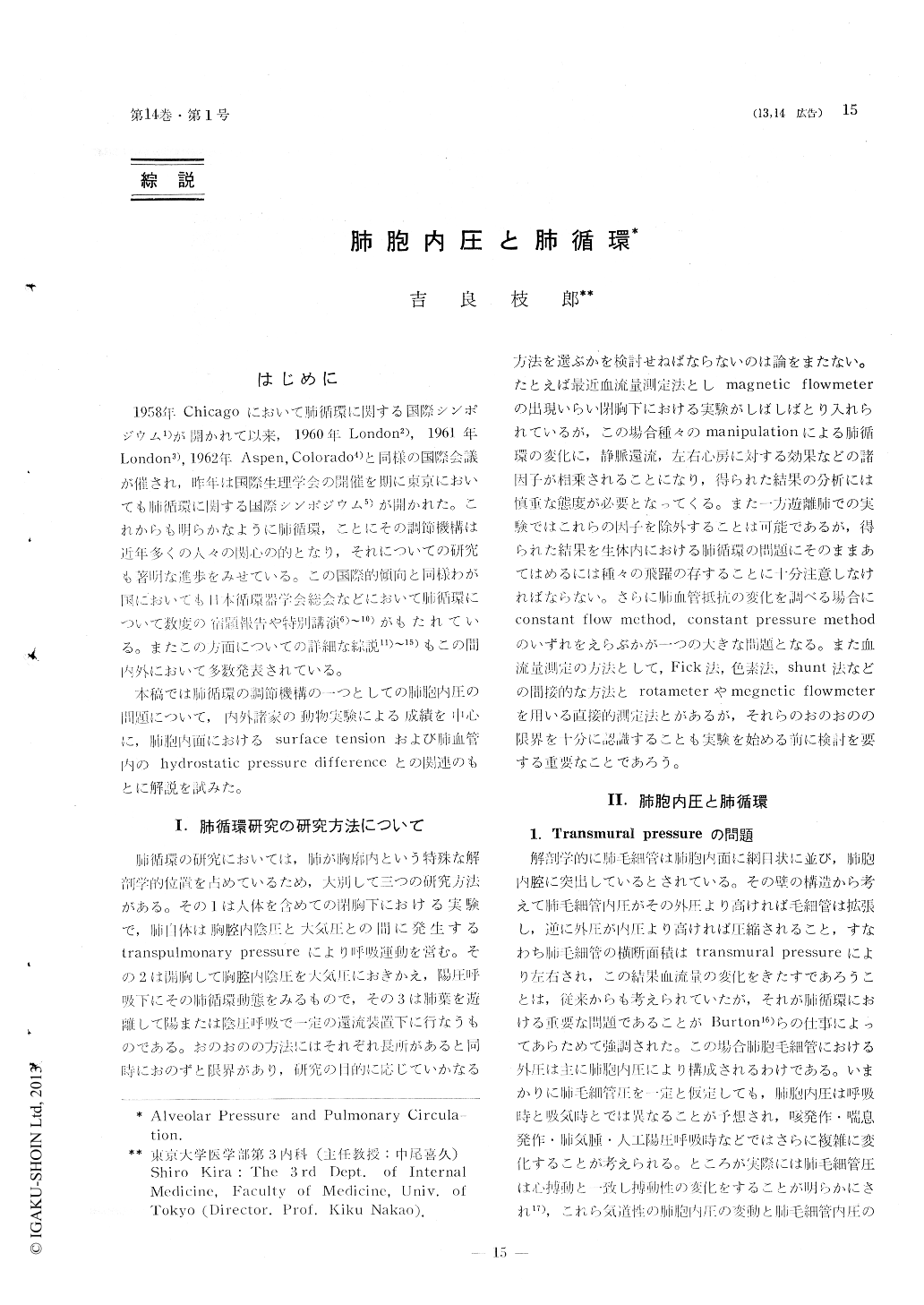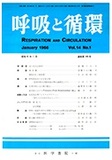Japanese
English
- 有料閲覧
- Abstract 文献概要
- 1ページ目 Look Inside
はじめに
1958年Chicagoにおいて肺循環に関する国際シンポジウム1)が開かれて以来,1960年London2),1961年London3),1962年Aspen,Colorado4)と同様の国際会議が催され,昨年は国際生理学会の開催を期に東京においても肺循環に関する国際シンポジウム5)が開かれた。これからも明らかなように肺循環,ことにその調節機構は近年多くの人々の関心の的となり,それについての研究も著明な進歩をみせている。この国際的傾向と同様わが国においても日本循環器学会総会などにおいて肺循環について数度の宿題報告や特別講演6)〜10)がもたれている。またこの方面についての詳細な綜説11)〜15)もこの間内外において多数発長されている。
本稿では肺循環の調節機構の一つとしての肺胞内圧の問題について,内外諸家の動物実験による成績を中心に,肺胞内面におけるsurface tensionおよび肺血管内のhydrostatic pressure differenceとの関連のもとに解説を試みた。
Alveolar pressure has been recognized by many workers as an important factor affect-ing the pulmonary circulation. This is based on the idea that pressure difference between outside and inside of blood vessels (transmural pressure) is an important determinant of the vascular caliber and eventually will affect the blood flow through them. In this article several mechanical factors which may affect the transmural pressure of pulmonary vessels have been reviewed.
The increase in the alveolar pressure which can be considered as the extravascular pres-sure of the alveolar capillaries, may reduce the caliber of pulmonary capillaries in two ways: through the reduction of the transmural pressure, and through the elongation of them. The liquid-filled pulmonary capillaries are suspended in an air-filled structure in which the extravascular(airway)pressure is approx-imately uniform, then transmural pressure in each vessel increases with the height of the hydrostatic column above it. Furthermore, surface tension generated at the boundary between air and liquid in the alveoli which may vary with the degree of inflation of each alveolus as well as with the change of the surfactive material, may affect the transmural pressure at the alveolar capillaries. As a result, the lung cannot be treated as a homoge-neous vascular bed. To complicate situation further, the calculated vascular conductance is affected by mechanical parameters such as the arterial, the venous pressures and mode (positive and negative) of lung inflation. It has been stressed that before any change in pulmonary conductance can be attributed to vasomotion, the posibility must be eliminated that the change is resulted by concurrently engendered mechanical factors.
In author's experiments in which the effect of the hydrostatic pressure difference within pulmonary vessels and surface tension in alveoli were eliminated with fluid-filled lung and vascular pressure was kept constant, the most important factor to regulate the pul-monary circulation was the transmural pres-sure at alveolar capillaries and also the stretch of the vascular vessels during lung inflation had lesser effect on the pulmonary vascular conductance. These results suggested the collapsible and nondistensible character of the pulmonary capillaries.

Copyright © 1966, Igaku-Shoin Ltd. All rights reserved.


